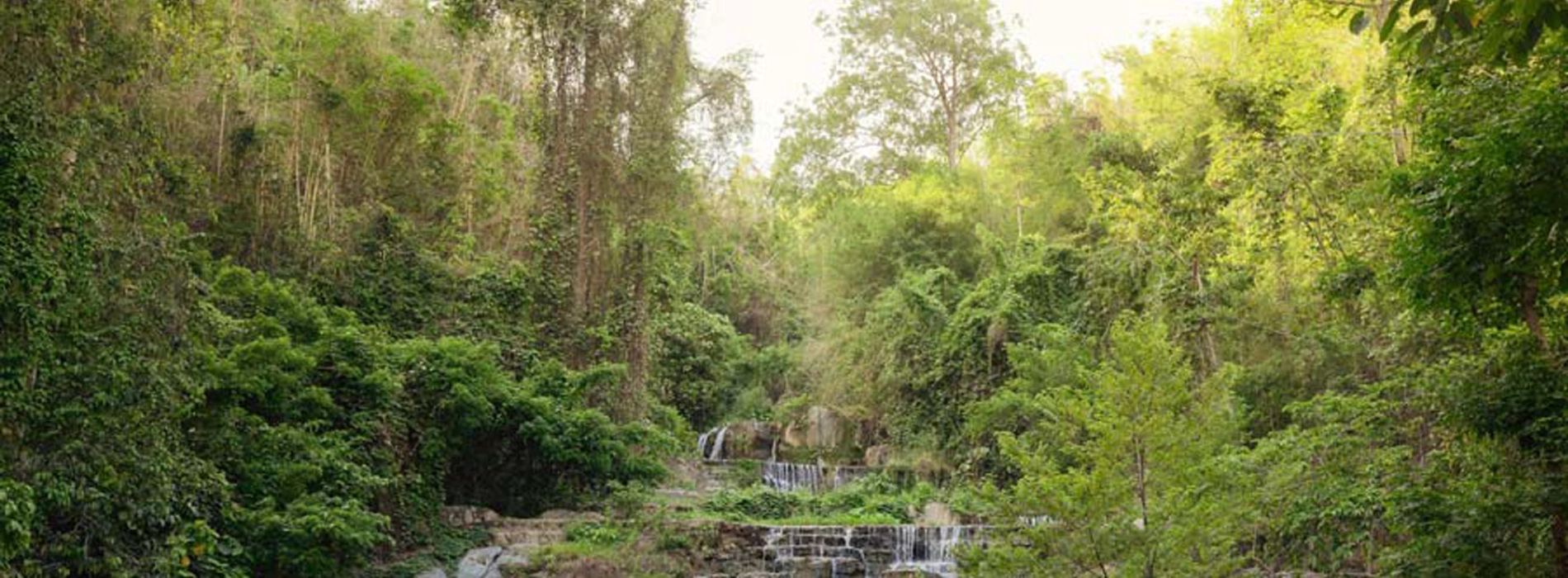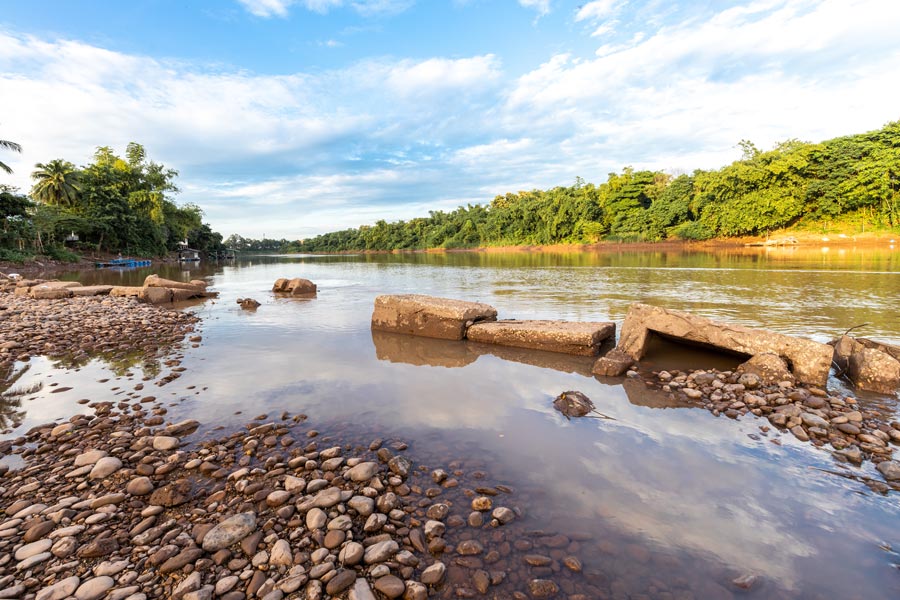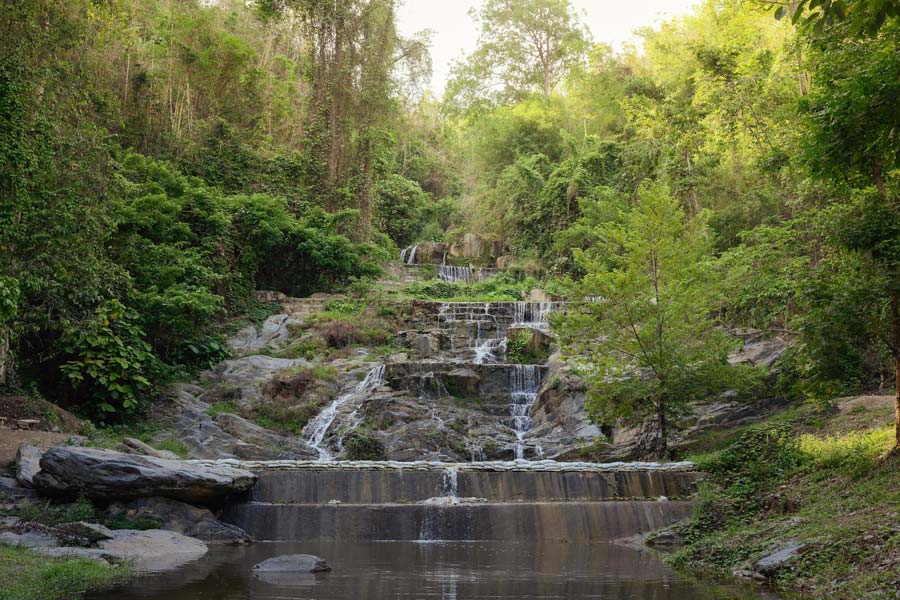Uttaradit

Nestled in the picturesque landscapes of northern Thailand, Uttaradit province captivates visitors with its diverse blend of natural beauty, rich cultural heritage, and traditional charm. The provincial capital, also named Uttaradit, serves as a gateway to a region characterized by lush mountains, verdant forests, and the meandering Nan River.
 The Nan River crosses the province of Uttaradit
The Nan River crosses the province of Uttaradit
As an agricultural hub, the province thrives on the cultivation of rice, while also embracing industrial activities such as timber processing. Visitors to Uttaradit can explore ancient temples like Wat Phra Thaen Sila At, adorned with time-honored Buddha images, and partake in vibrant local festivals that illuminate the region's customs. Nature enthusiasts can find solace in the expansive Phu Soi Dao National Park, home to diverse flora and fauna set against a backdrop of rugged mountains. With a well-connected transportation network and a delightful array of Northern Thai cuisine, Uttaradit beckons travelers to uncover the allure of its landscapes, cultural treasures, and culinary delights.
The history of Uttaradit is deeply intertwined with the broader historical narrative of Thailand, reflecting the ebb and flow of different kingdoms and empires throughout the centuries. Archaeological evidence suggests that the area has been inhabited since the Dvaravati and Hariphunchai periods, showcasing a long-standing human presence. During the Sukhothai Kingdom (13th to 15th centuries), Uttaradit was part of the northern frontier, contributing to the kingdom's defense and serving as a vital region for trade and cultural exchange.
 Wat Phra Thaen Sila At at Uttaradit province
Wat Phra Thaen Sila At at Uttaradit province
As the Sukhothai Kingdom gave way to the Ayutthaya Kingdom, Uttaradit's significance continued to grow. It played a crucial role in both trade and military strategies. The area experienced administrative changes during the 19th century under the reigns of King Rama IV and King Rama V of the Rattanakosin Kingdom. The province's boundaries were officially defined, solidifying its place within the Thai administrative structure.
During the 20th century, Uttaradit emerged as a center of political activism. Residents actively engaged in movements for democracy and social change, contributing to the broader political landscape of Thailand. The province's history is a tapestry woven with the threads of political, cultural, and social developments.
Uttaradit's cultural heritage is evident in its ancient temples and historical sites. Wat Phra Thaen Sila At, with its revered Buddha images, stands as a testament to the region's religious and cultural significance. These landmarks provide a tangible connection to the past, inviting visitors to explore and appreciate the historical layers that have shaped Uttaradit.
 A magnificent waterfall in the province of Uttaradit
A magnificent waterfall in the province of Uttaradit
Today, Uttaradit is not just a repository of history but a dynamic province that seamlessly blends its historical roots with modern developments. As it continues to evolve, Uttaradit remains a living testament to the resilience, adaptability, and cultural richness of the Thai people.
You may also like: Top 5 Most Popular Thailand Festivals
The best time to visit Uttaradit, like many other parts of Thailand, is during the cool and dry season, which typically spans from November to February. This period offers more comfortable temperatures and lower humidity levels, making it ideal for outdoor activities and sightseeing. The weather during these months is characterized by clear skies and pleasant temperatures, making it a popular time for tourists to explore the region's natural and cultural attractions.
 The spectacular view of the Uttaradit province
The spectacular view of the Uttaradit province
Avoiding the rainy season, which typically occurs from June to October, is advisable if you want to minimize the risk of heavy rainfall and potential disruptions to travel plans. The rainy season can bring frequent and intense downpours, leading to flooding in some areas.
The hot season, from March to May, sees higher temperatures and increased humidity. While this period can be suitable for travelers who don't mind the heat, it's essential to stay hydrated and take precautions against the sun.
In summary, the best time to visit Uttaradit is during the cool and dry season from November to February when the weather is more pleasant and conducive to outdoor activities. However, individual preferences regarding weather and tolerance for heat may influence the choice of travel dates. Always check current weather forecasts and consider any travel advisories or updates before planning your visit.
Getting to Uttaradit is relatively convenient, and you can choose from various transportation options, including air travel, bus, and train, depending on your starting location. Here are the common methods of transportation to reach Uttaradit:
1. By Air:
- The nearest major airport is Phitsanulok Airport (PHS), which is approximately 80 kilometers south of Uttaradit. From the airport, you can take a taxi, bus, or private transportation to reach Uttaradit.
2. By Bus:
- Uttaradit is well-connected by bus services from various cities in Thailand. There are both government-operated and private bus companies that provide services to Uttaradit. The central bus terminal in the province is the Uttaradit Bus Terminal. You can check the schedules and book tickets at the respective bus stations or online platforms.
3. By Train:
- Uttaradit has a railway station, and train travel can be a scenic and comfortable option. Trains run from Bangkok to Uttaradit, and the journey offers picturesque views of the Thai countryside. The train station in Uttaradit is situated in the town center.
4. By Car:
- If you prefer driving, you can rent a car and take a road trip to Uttaradit. The province is accessible by road from various directions. Thailand has a well-maintained network of highways, and the journey can be an opportunity to explore the countryside.
You may also like: Things you need to know about Pad Thai